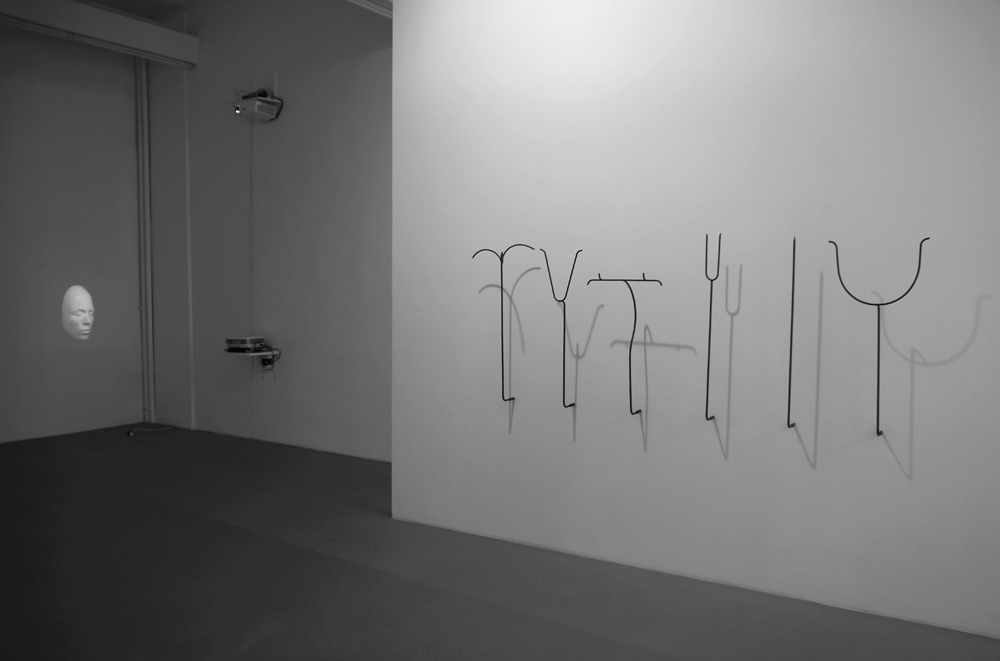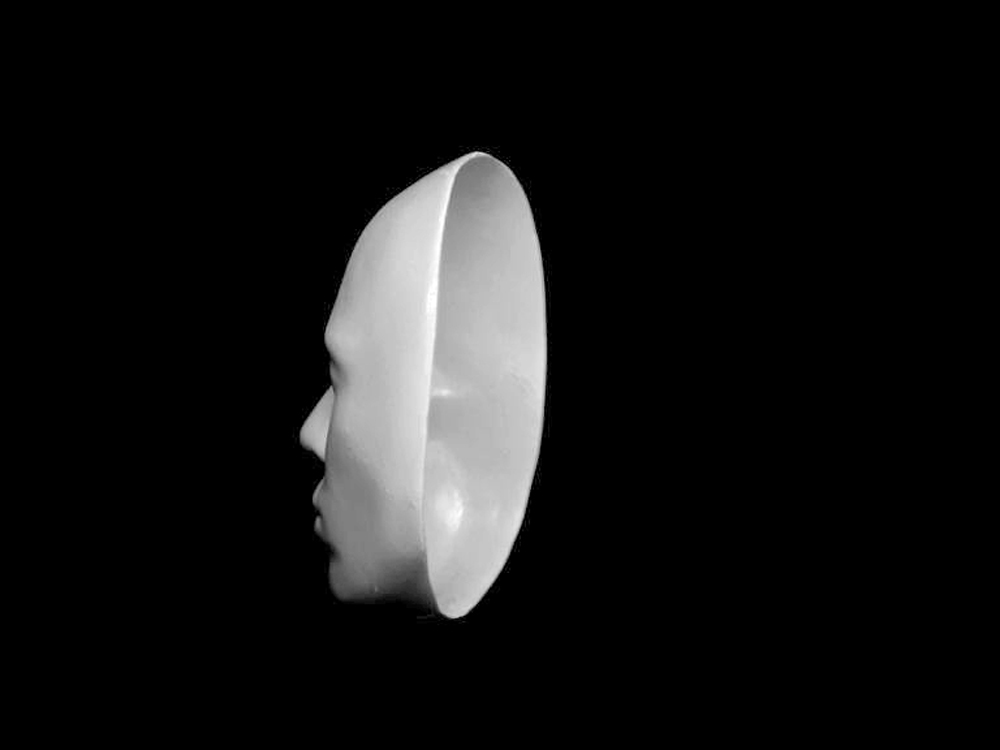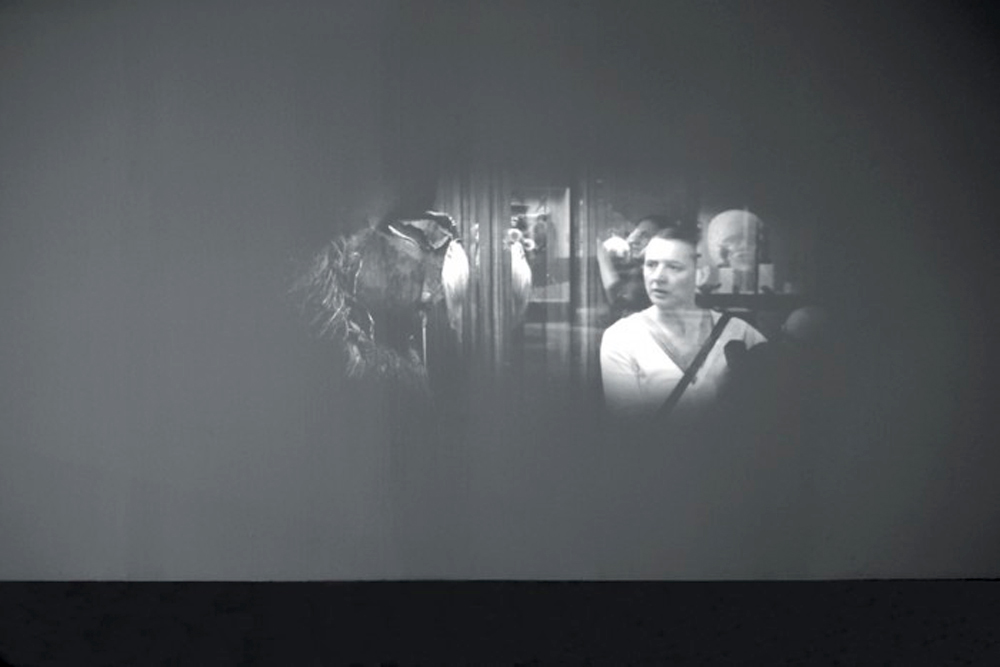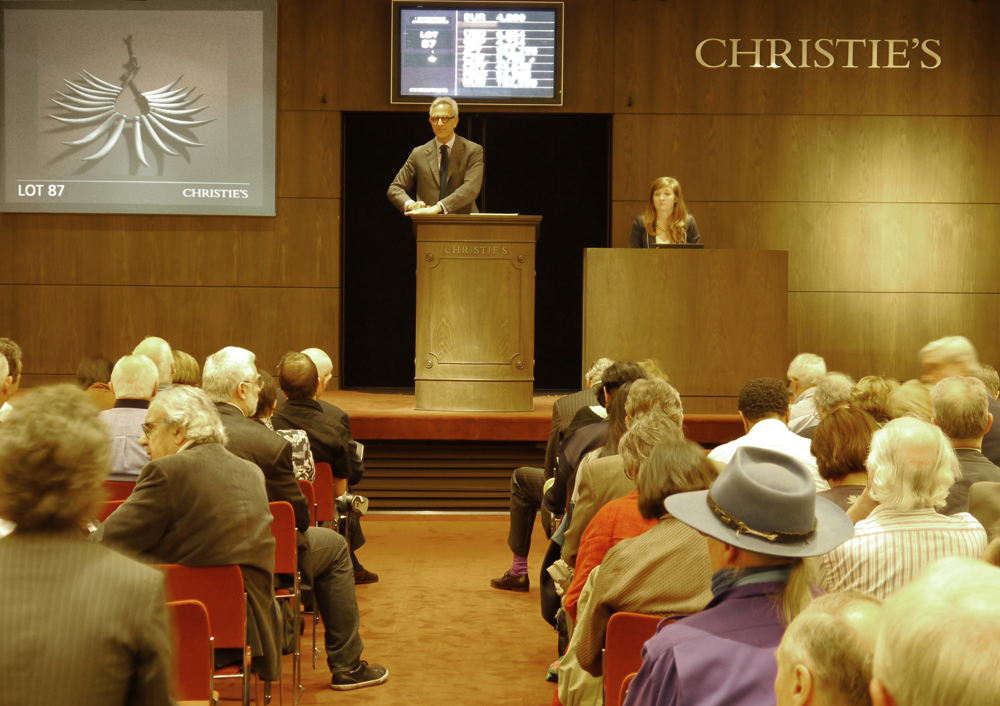Trophies
Solo-Exhibition, Sfeir-Semler Gallery, Hambourg / 2011

African masks in ethnological museums are always presented in the same way: placed in an illumintated showcase, we can only see their front sides, looking at us with their empty eyes. The de-contextualized masks are fixed on metal stands - like skull trophies - which forms are always adapted to the corresponding mask.But what about the invisible backside of the mask and its concave interior? How does it look like and above all: what does the mask see itself? And why is the backside never shown to the public in ethnological exhibitions?

In the huge collections and archives of the Royal Museum for Central Africa in Brussels, the Other is examined, numbered, classified and controlled through objects. Those objects or throphies, whose authors just as well as their violent appropriation are consequently hidden and ignored, were mostly acquired at so-called ´expeditions´ during the Belgian colonial rule in the Congo. Especially the backside of the african mask with its stamps, inscriptions and numerations provides a revealing testimony of the bloody, Belgian-Congolese history.On the basis of a seemingly simple question of the backside of the african mask, further far-reaching questions of the distinction between viewer and object, Us and the Other, mirror and mirrored arise: If I am the Other, then who are you?




